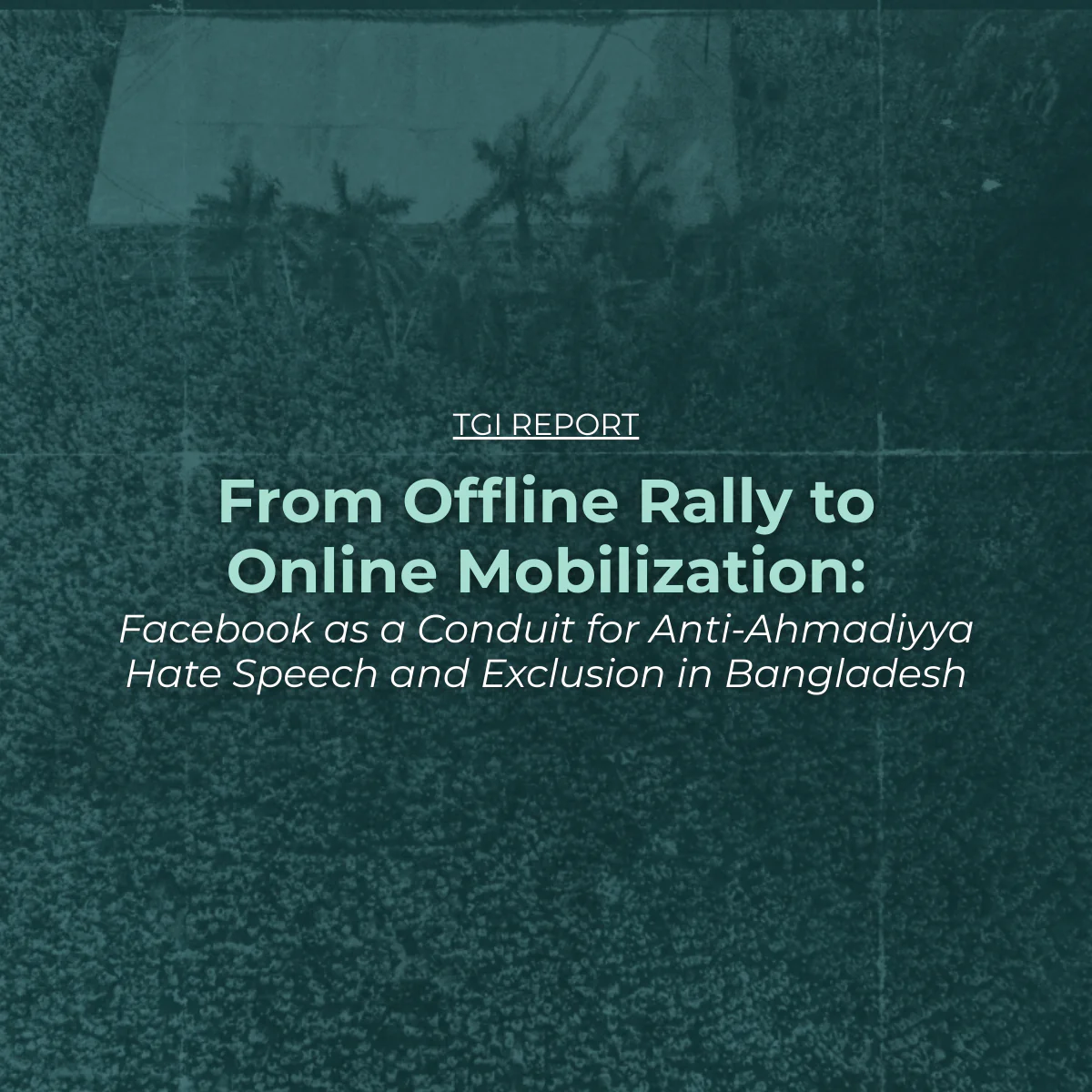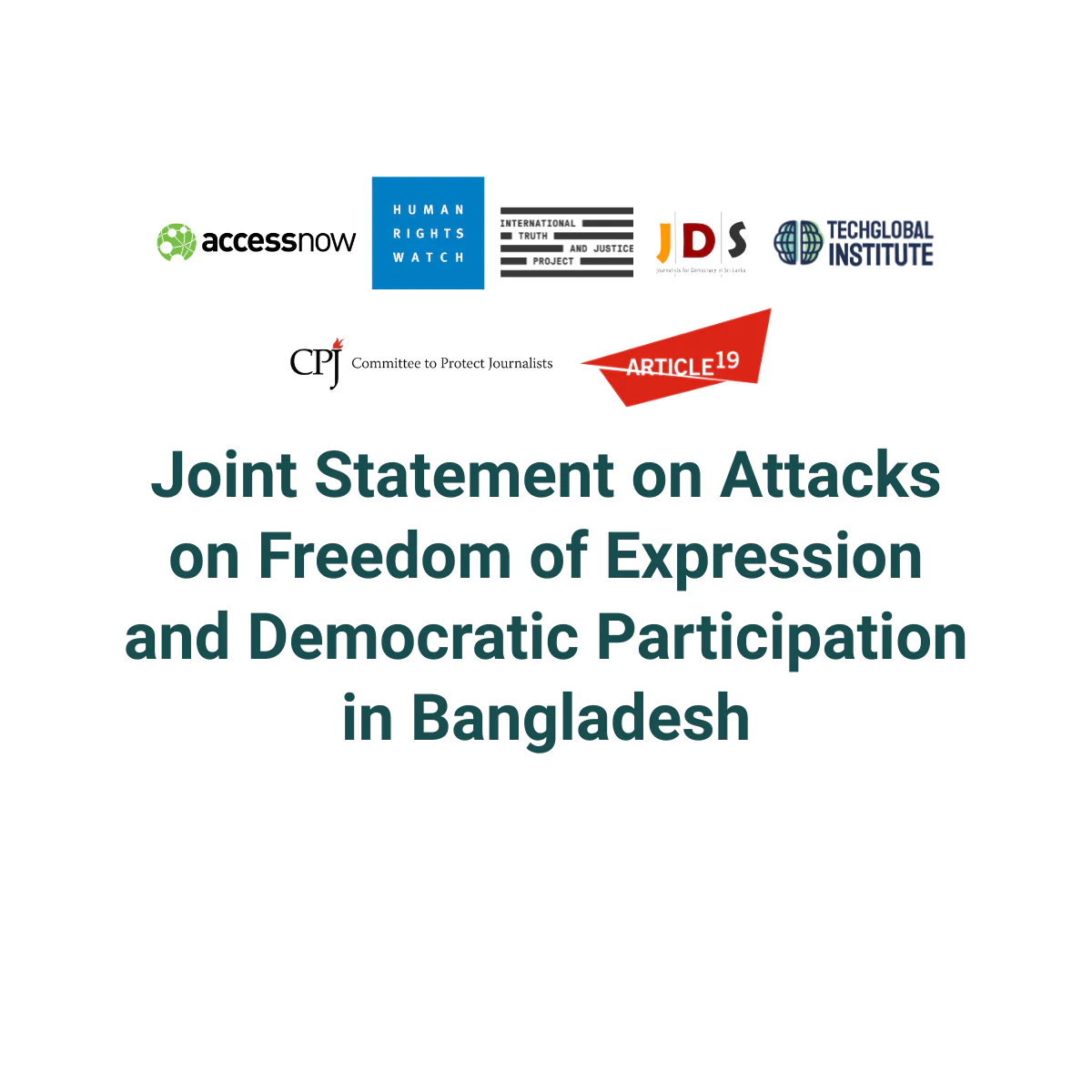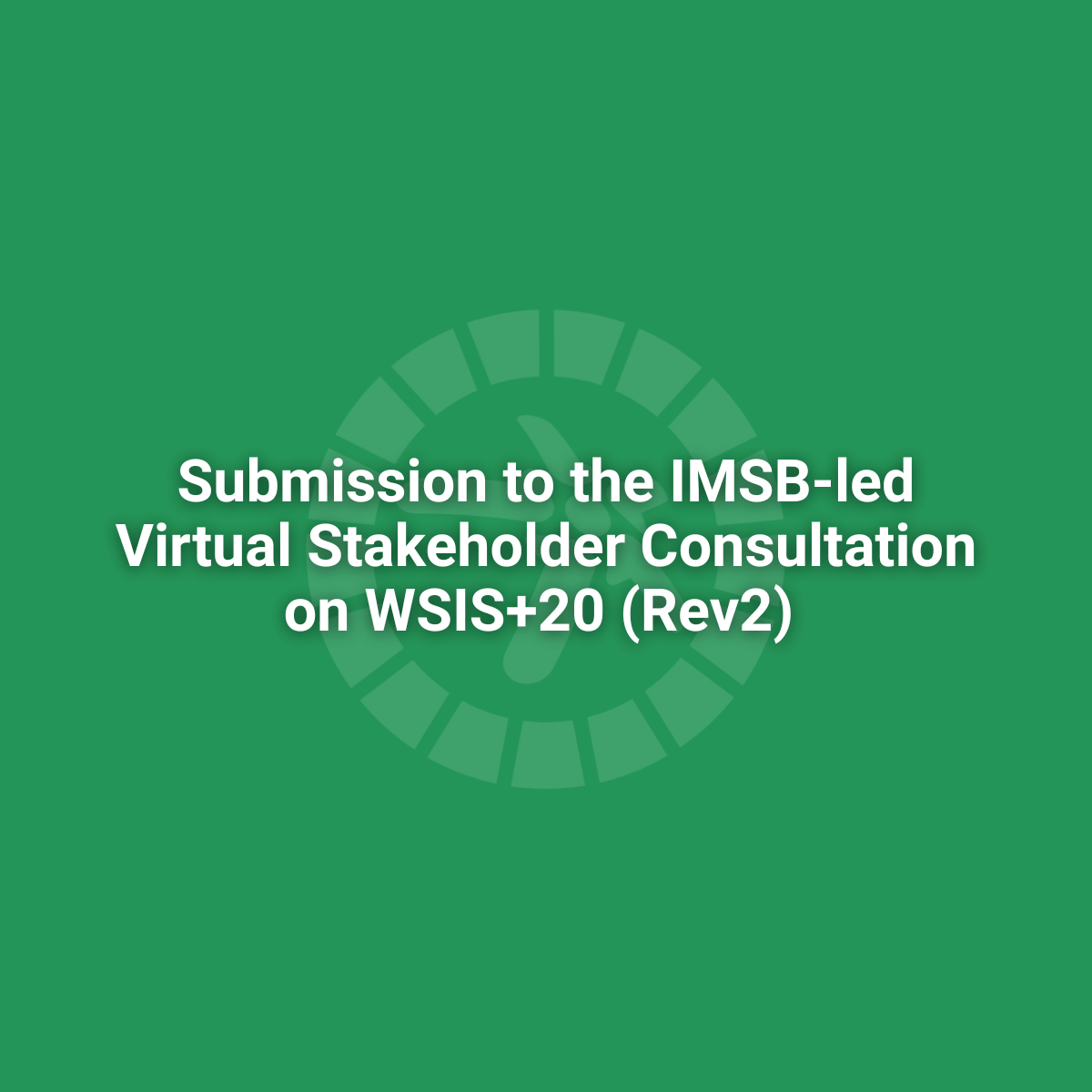The month-long student-led mass movement that led to the resignation of Prime Minister Sheikh Hasina was marred not only with violence, but also a surge in mis- and disinformation. Historically, the country’s former ruling party, the Awami League, has been reportedly involved with spreading false information, however, during this period, and since the prime minister’s ouster, there has been a marked increase in misleading information and propaganda from neighboring country, India.
Our analysis examines a sample of 179 pieces of debunked mis- and disinformation between 15th July and 9th August based on data provided by six fact-checking organizations to find key patterns, the degree of coordinated activities, and the sources and incentives behind them. We review false news on three social media platforms: Facebook, YouTube and X. While Facebook’s parent company, Meta, has several accredited fact-checkers in Bangladesh (AFP, FactWatch and Boom), YouTube and X do not have a similar fact-checking program.
The prime minister’s resignation has been followed by a continuing period of instability and violence, the brunt of which was borne by minority communities through targeted attacks, killings and vandalism of houses and places of worship. Ahmadiyya mosques, Hindu temples and churches, among others, were targeted by arsonists and armed vandalizers in 205 attacks in at least 52 districts across the country. In Dhaka, the country’s capital, witnessed a sharp rise in armed robberies. In response, clerics, students, and residents of different areas have gathered in front of minority-owned establishments in several places and initiated community neighborhood watch.
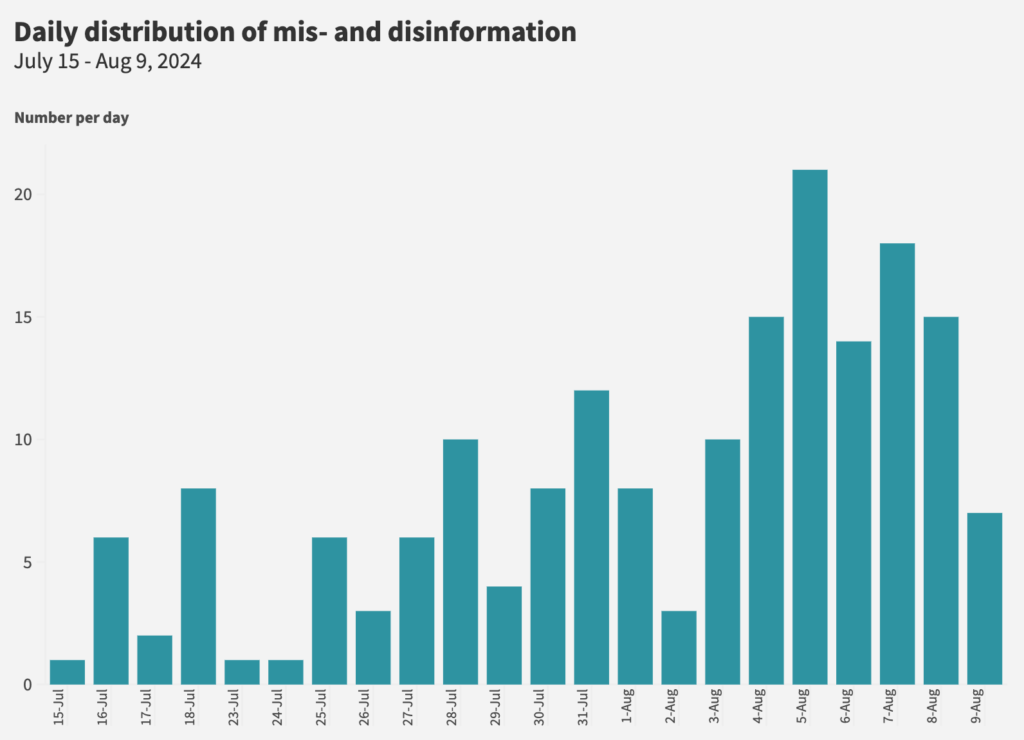
Mis- and disinformation targeting diaspora Bangladeshis were on the rise during Internet blackouts
Bangladesh experienced a state-sanctioned nationwide Internet shutdown between July 18th and July 23rd that resulted in throttling of mobile data from 4G to 2G, blocking of fixed-line Internet, and blocking of major social media and messaging platforms, as well as a de facto media blackout. Although fixed-line Internet was restored on July 23rd, mobile data, social media and messaging platforms remained blocked for several days. Users in Bangladesh were accessing blocked platforms using VPN, and were exposed to a slew of disinformation about the ground situation, largely aimed at exacerbating confusion.

Despite Facebook remaining blocked between July 23rd and July 30th, based on analysis using data from Meta Ad Library, at least US $33,992 was spent on 1,986 politically-motivated advertisements, of which 97 percent were pro-government and aimed at blaming the opposition and “third parties” for violence during the student-led protests, despite media reports showing police brutality against students. Majority of the pages were traced back to Bangladesh, confirming that the admins were accessing VPN to run ads.
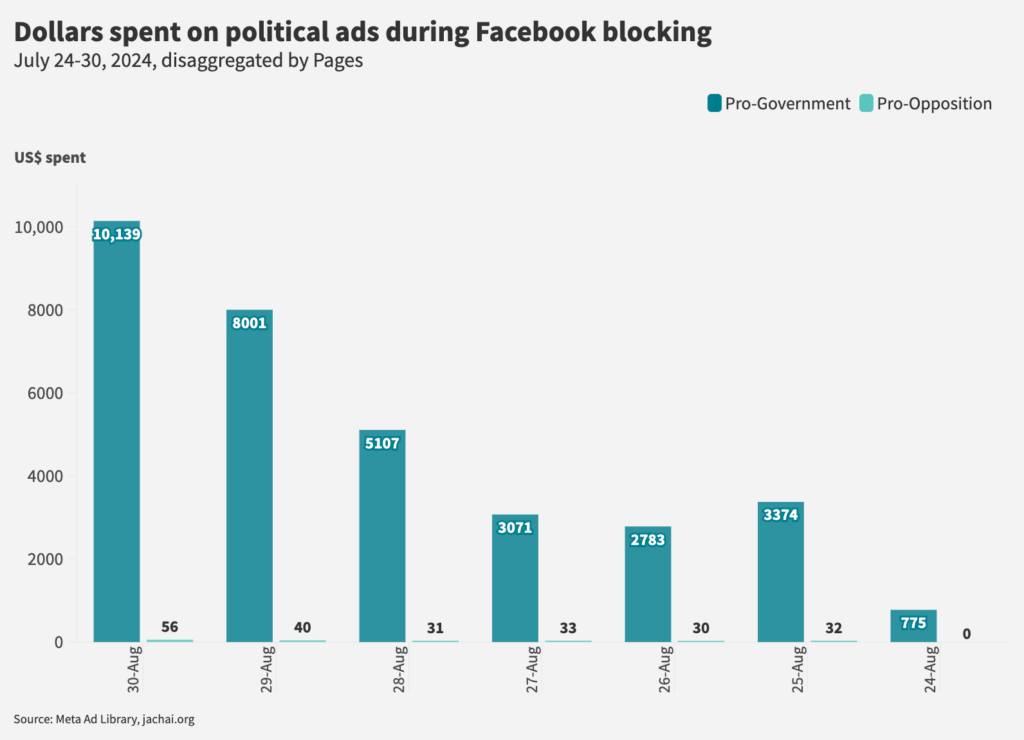
Over 70 percent mis- and disinformation were debunked as completely false, and are spread using photos
We analyzed 179 pieces of content debunked by six fact-checking organizations between 15th July and 9th August. Out of the debunked content, 126 (70.4%) were rated False, 41 (22.9%) were rated Missing Context, 10 (5.6%) were rated Altered and 2 (1.1%) were rated as Partly False. A False rating indicates content that are entirely non-factual, or rumors, while Missing Context, Altered or Partly False are typically content that has some missing information, such as dates, numbers, or events, or a mix of true and false interpretations of something that has happened. Altered content would imply fake, or manipulated video, audio or visual content that has been modified using basic editing or AI tools and includes materials that were not conveyed by the subjects portrayed in the content.
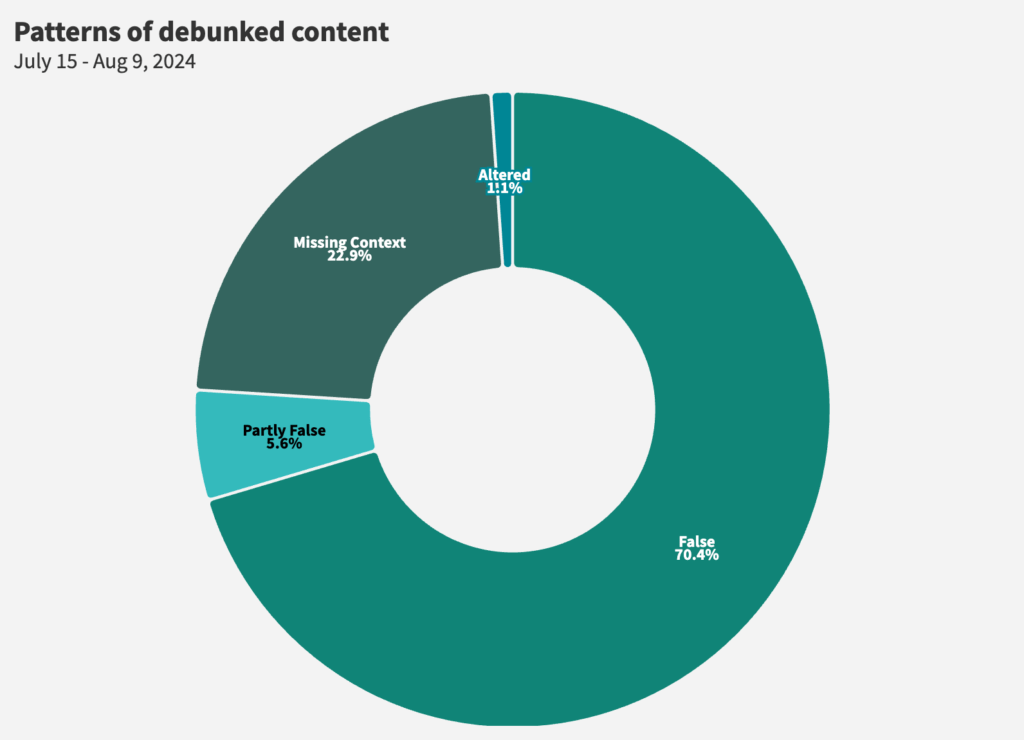
Given low-literacy users, majority of mis- and disinformation is shared using photos, videos and photo cards.
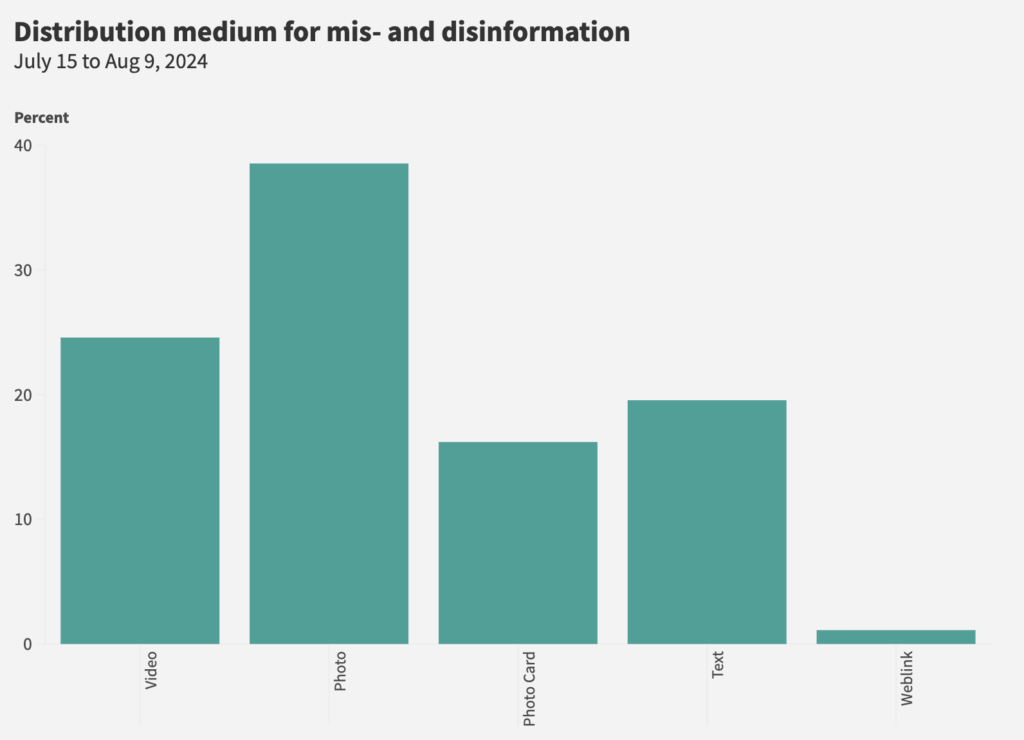
Majority of mis- and disinformation spread false narratives to undermine the student-led movement
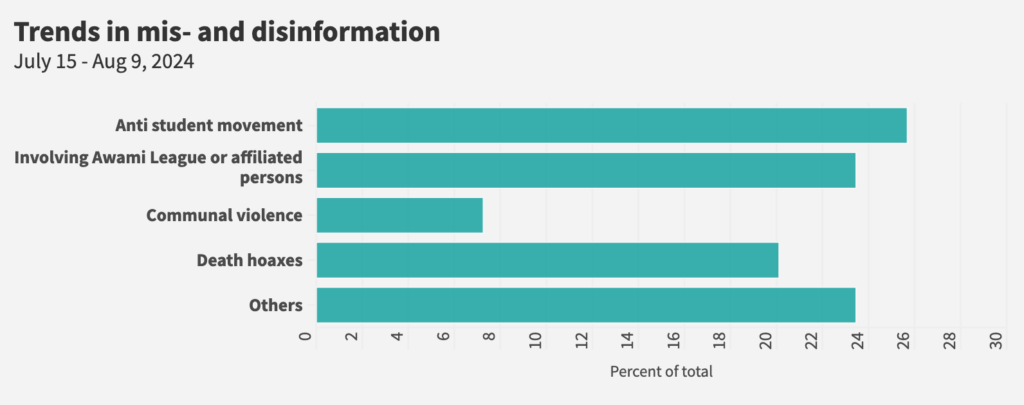
Rumors of death and rape are common during protests and social movements globally, fueled by widespread agitation and media sensationalism, and can significantly impact the dynamics of a protest and perceptions. In our analysis, we found 36 rumors related to the death and rape of student protesters, for example:
- Twenty-seven female students allegedly raped during the quota reform protests
- 100 dead bodies were found
- Mass graves at Shangshad Bhaban
While most rumors claimed death of protesters, a handful of members of the Chhatra League, politicians, and police, were also targeted with death hoaxes. There were also several contents claiming the death of former prime ministers Sheikh Hasina and Khaleda Zia.
Of note, a photo card falsely bearing the logo of Prothom Alo, the country’s largest national daily, went viral claiming 1,700 people have been killed during the student movement. Using logos of prominent media outlets to spread disinformation is a common tactic in Bangladesh and exacerbates confusion among the public, as seen in the examples below.

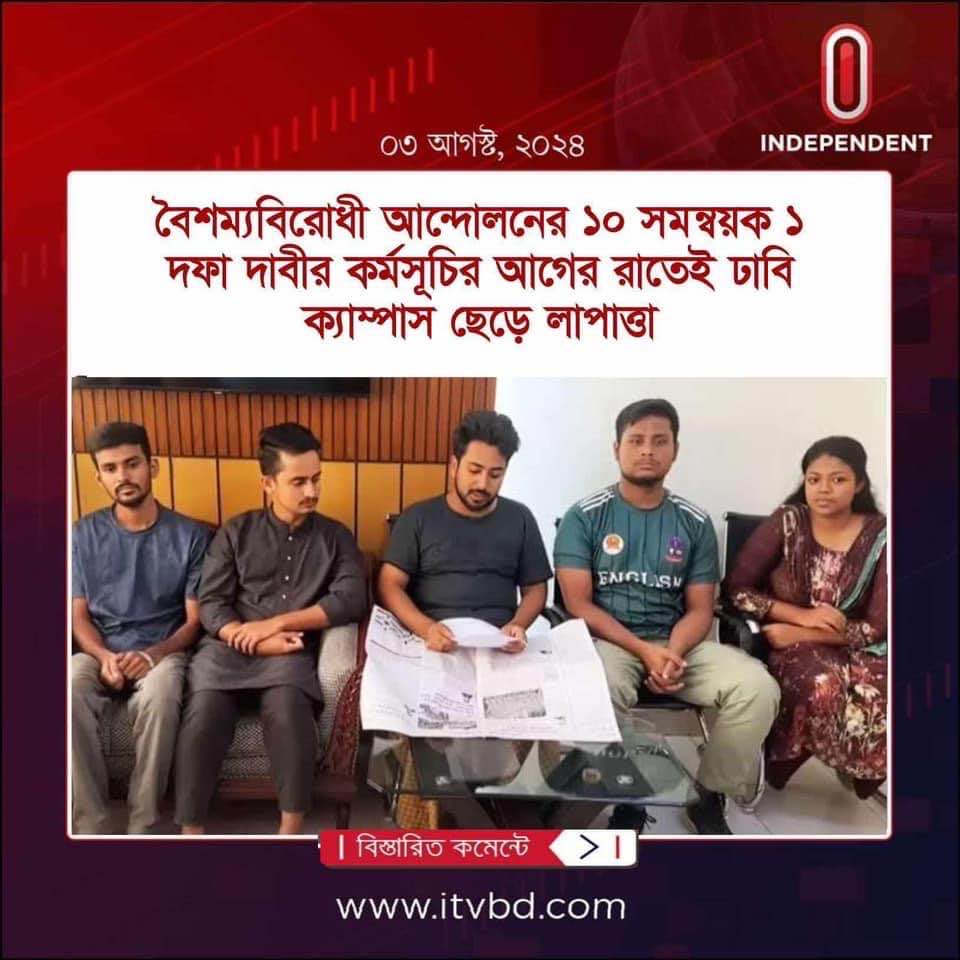
Our analysis finds at least 16% of disinformation is shared using photo cards falsely bearing logos of popular mainstream media, such as Prothom Alo, Somoy TV, Independent TV, Jamuna TV, Channel 24, The Business Standards, and others.
In addition to death hoaxes, discrediting individual protestors was observed as a tactic to strategically question the credibility of the movement, and deflecting attention from the core issues. Some examples are:
- Students were caught with weapon, drugs and money
- Jamaat-Shibir joining the movement with weapons, including circulation of old or unrelated videos arms being given to students by Chhatra Shibir
- Unverifiable claims about sexual harassment by protesters on their female counterparts
Further, after the regime fell on August 5, a concerted disinformation campaign claiming that Nobel Laureate Professor Muhammad Yunus (who now is the chief advisor of the interim government) had donated BDT 5,000 through bKash to everyone during the movement.
Coordinated disinformation about communal violence in Bangladesh surged on social media after the prime minister’s resignation
Although there has been widespread violence against minorities in Bangladesh, and vandalism of places of worship and homes, leading to at least 232 reported deaths, there has also been a concerted effort by Bangladesh social media pages and Indian right-wing mainstream and social media to spread panic and exaggerate the types of attacks or its scale. These content uses old videos from a different event in the past, or modifies an existing video or photo using basic editing tools to portray scenes of anarchy and violent deaths of Hindu minorities. Some examples include:
- Rumors about abduction of Hindu women
- Muslim women tying up Hindu women to torture
- A Hindu cricketer’s house being set on fire
- Video of a restaurant fire claimed to be temple arson
- Sharing India’s old case of gang rape as the incident of a Hindu girl in Bangladesh
- Republishing the old incidents of temple attacks as recent events
- Sharing old videos of Muslim families and Awami League leader lynched in Bangladesh
- Sharing old photographs of Rabindranath Tagore’s damaged sculpture fake
- Altered videos of attacks on Hindu hostel in Dhaka, claiming it was done by Jamaat
- Outdated videos of a brutal murder from Andhra Pradesh, claiming it to be violence in Bangladesh
These contents were cross-posted on Facebook, YouTube and X, largely targeting diaspora Bangladeshis, Indians, and the broader international community using hashtags such as SaveBangladeshiHindus, and in a coordinated manner. The narrative is consistent with the goal to portray Bangladesh as a failed state after the regime change, and the content is shared by both authentic and a network of bot accounts.
We zoomed in to analyze over 100 debunked claims on X between Aug 5th and Aug 10th to identify key categories of foreign disinformation to fuel communal tensions, largely originating from accounts that self-identify their location in India. The charts below highlights disaggregation of foreign disinformation based on volume of content and engagement metrics.

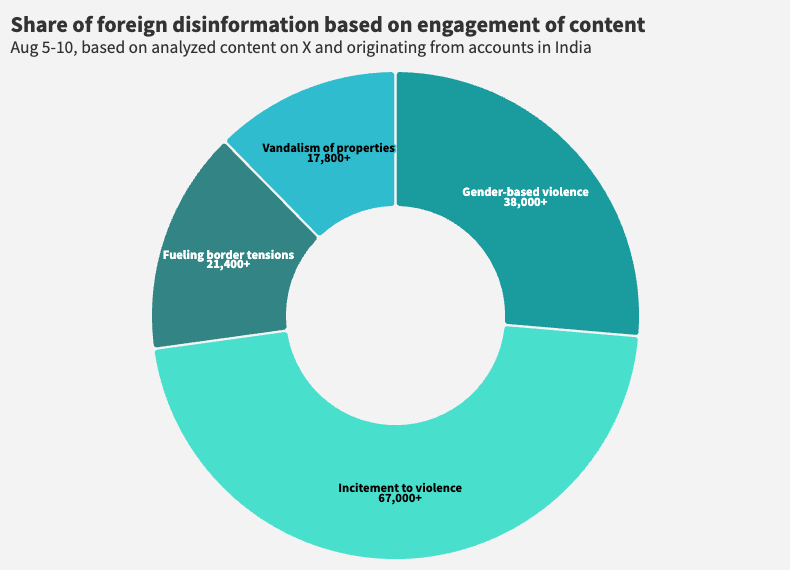
Bangladesh has had a history of anti-Hindu attacks during and prior the Awami League government’s ouster in early August, therefore, the present disinformation campaign specifically aims at establishing that Hindus, Ahmaddiyas, and other minority religious factions are disproportionately unsafe in post- Awami League Bangladesh.
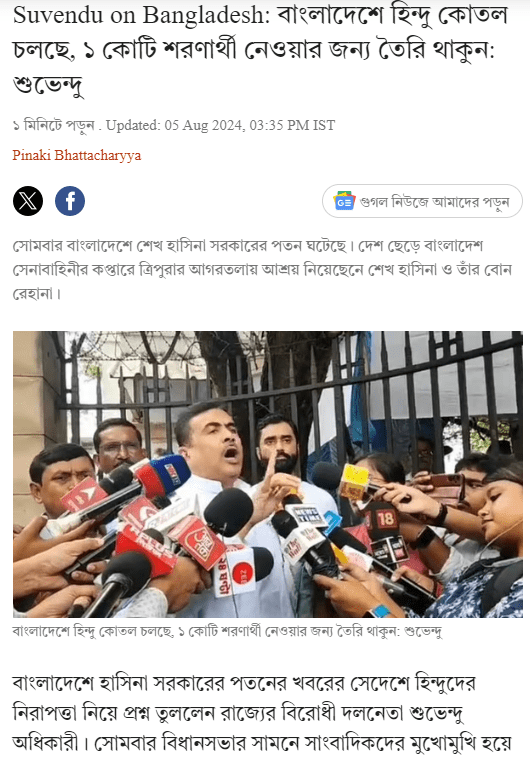
Within Bangladesh’s political landscape, Awami League is often perceived as the center-left party promoting secular values, relative to other right-wing parties. After the Awami League government felt, fear of Hindus being persecuted spread across West Bengal. Statements from Indian politicians, such as that of BJP’s Subhendu Adhikari, stoked more fear by spreading unverifiable information, for example: “More than one crore refugees from Bangladesh will enter West Bengal soon.
Disinformation about ethnic tensions in Bangladesh were amplified by Indian right-wing mainstream media
Debunked claims about attacks on minorities, specifically Hindu communities, were also shared by right-wing mainstream media in Bangladesh that featured outdated video footage, or played them in a loop. Several Indian mainstream media, such as Republic Bangla, Zee 24 Hours and Ei Muhurte tried to present the student-led movement as a “move towards radicalization”. In a news show at Republic Bangla that has 4.85M subscribers on YouTube, the presenter, Mayukh Ranjan Ghosh, claimed, “This is not any student protest, freedom struggle or revolution. Bangladesh has completed the first step of becoming Afghanistan.”
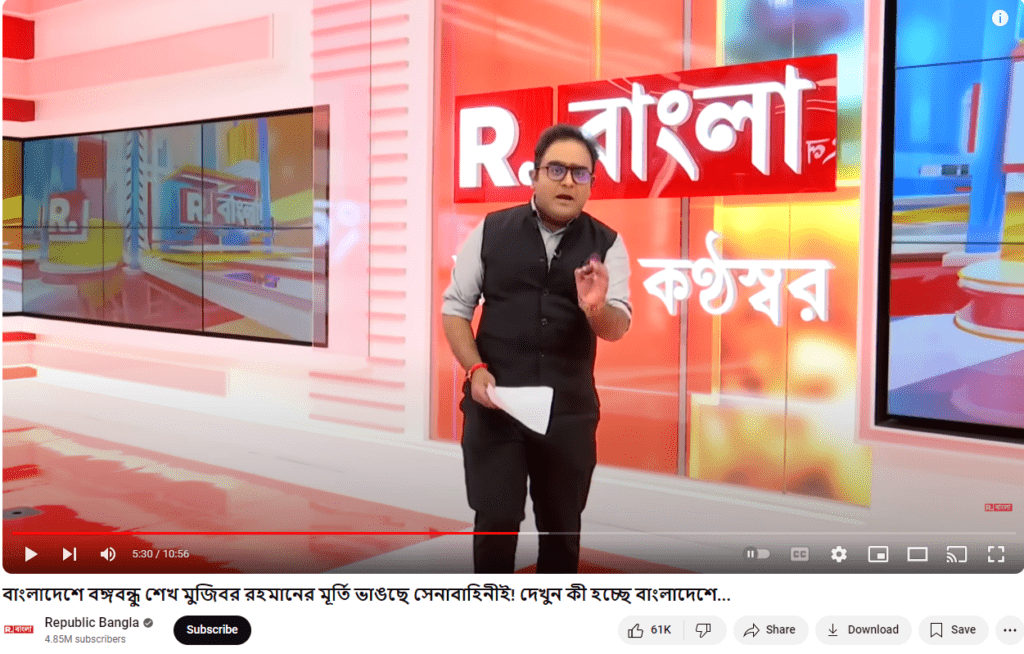
AI was used to create images of attacks on Hindus to exacerbate ethnic tensions
Several AI-generated images were found circulating on X and Facebook showing burning temples and torched bodies. Our analysis finds one particular image, viewed 34,600 times on X, contains the caption ALL EYES ON BANGLADESH HINDUS superimposed on the graphic, while another version bearing similar text reads SAVE HINDUS were both generated using an off-the-shelf tool resembling typical characteristics of synthetic media, such as the color tone, lack of proportion of the bodies depicted, and so on. The ease of generating AI-based images and content to fuel ethnic tensions make the information ecosystem even murkier in an already volatile situation, especially with the lack of readily available detection and forensics capabilities in Bangladesh.
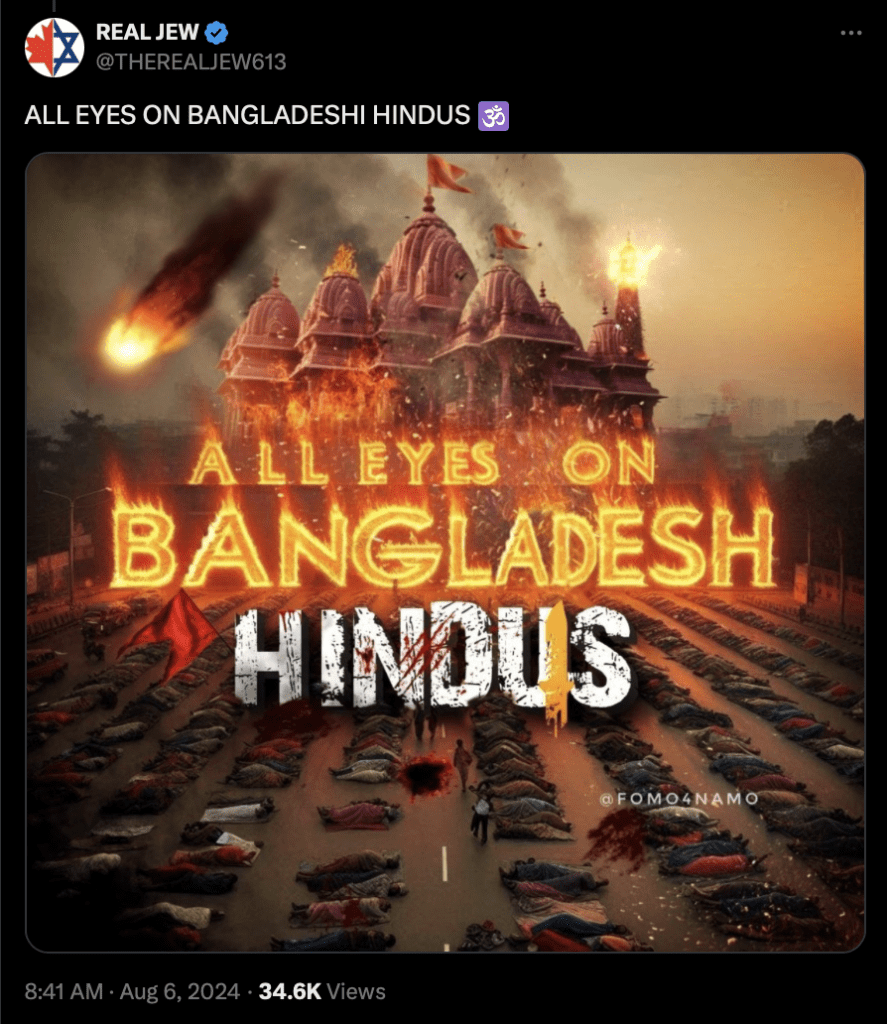

Deep Dive on Communal Violence: Claim vs. Fact
Claim #1: A video of a group of men forcefully abducting a Hindu woman and putting her into a vehicle in Bangladesh.
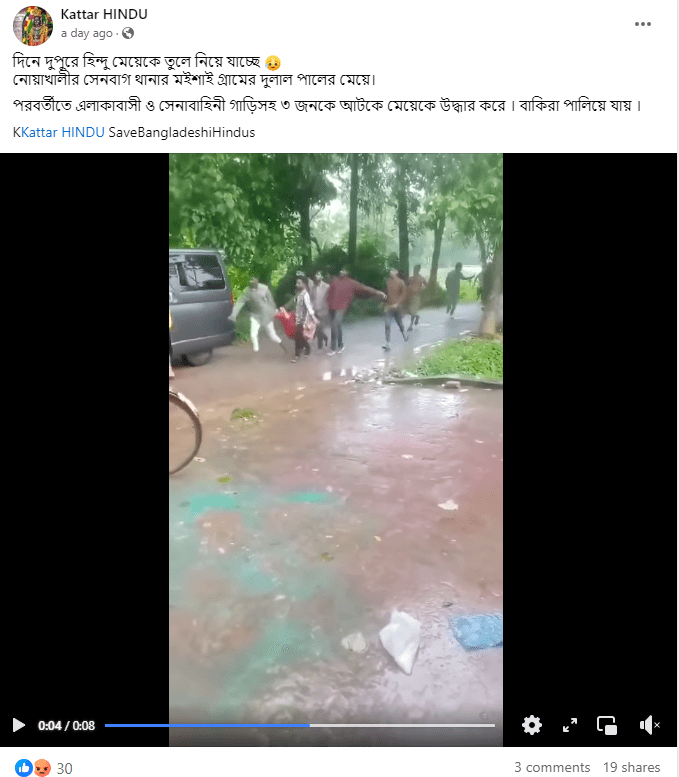
A video was found circulating on Facebook and X showing a group of men forcing a woman to get inside a vehicle. Multiple accounts shared the video claiming it to be abduction of a Hindu woman by Bangladeshi Muslims.
Fact-check #1: A man is trying to force his former wife to come with him and they both belong to the Hindu religion. The video is from Noakhali, Bangladesh.
Claim #2: Video showing several Hindu-owned shops burning
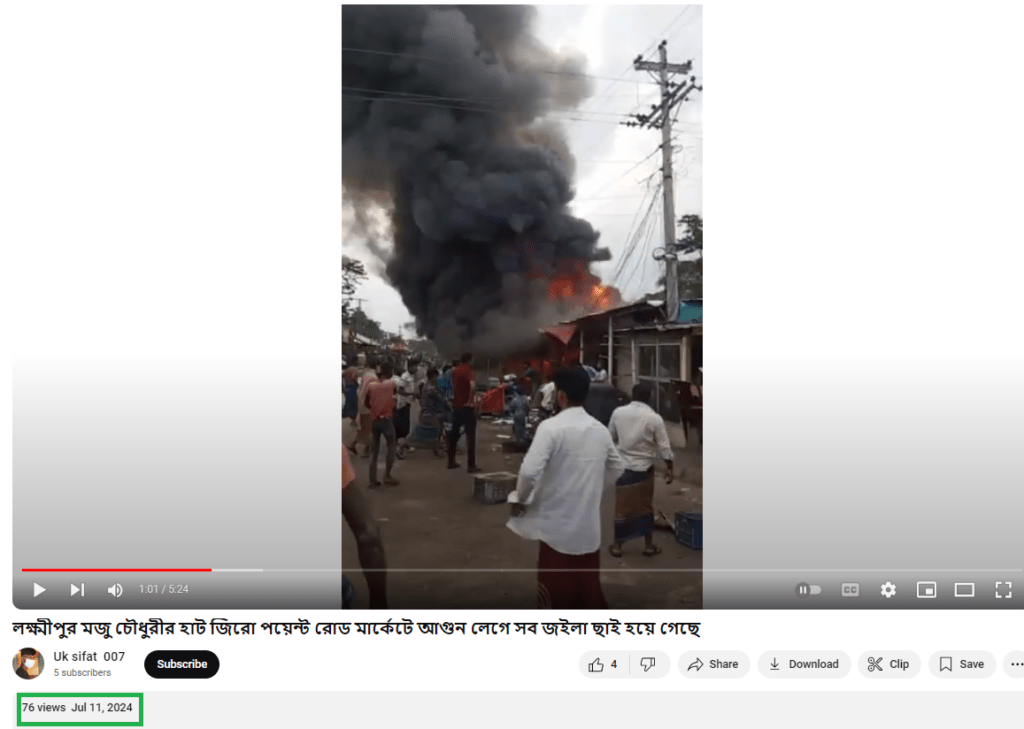
A video was found circulating on Facebook and YouTube showing smokes and ashes coming out of several shops. The video claims that fundamentalist arsonists have set fire on Hindu-owned businesses just after the prime minister’s resignation with commentary about communal violence.
Fact-check #2: The video is outdated and does not have any ties to recent protests in Bangladesh.
Claim #3: Bangladeshi cricketer Liton Das’ home set on fire

A video was found circulating on YouTube, Facebook and X claiming students have set fire on Bangladeshi cricketer Liton Das’, who identifies as Hindu, home in Bangladesh. The news was also covered in regional right-wing broadcasting channels in India.
Fact-check #3: The house belongs to Mashrafe Mortaza, another Bangladeshi cricketer and member of the parliament under the Awami League government. Mortaza’s house was set on fire by rioters because of his close ties to the regime. DW geolocated the house as belonging to Mortaza.
Claim #4: Hindu temple set on fire
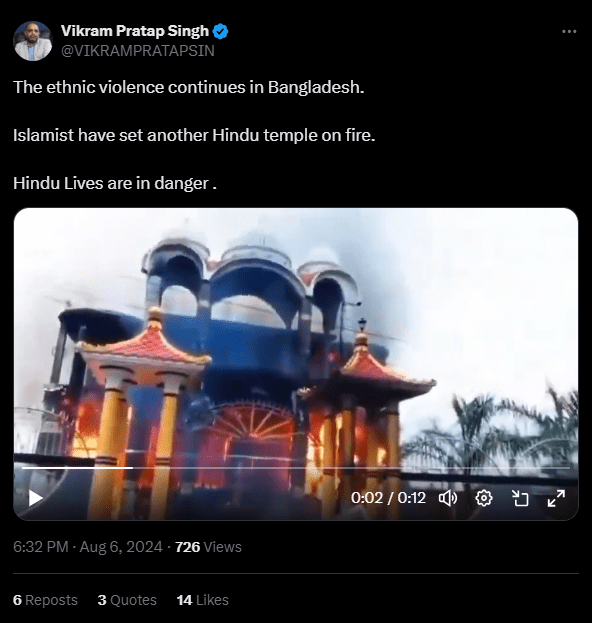
A video was found circulating on a verified X account, originating from India, claiming that a Hindu temple was set on fire by Islamist fundamentalists in Bangladesh amid ongoing violence against minorities. This is against the backdrop of separate eyewitness and media reports confirming that there has been multiple instances of arson on places of worship.
Fact-check #4: The video shared on X is not a temple; it is a restaurant called Raj Prasad Restaurant and Resort in Satkhira, Bangladesh. The restaurant belongs to a former Awami League leader.
Claim #5: Radicals vandalized the bust of Rabindranath Tagore
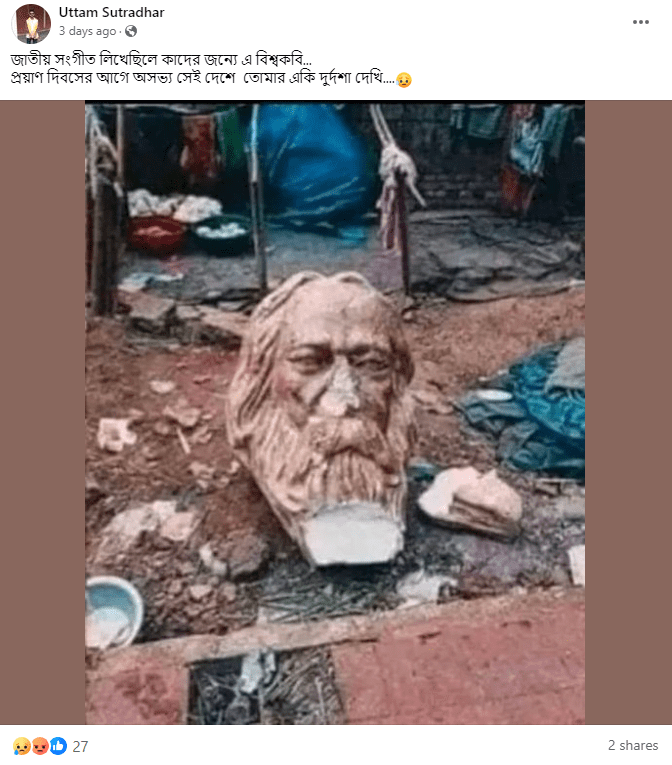
A photo was found circulating on Facebook and X on multiple accounts claiming that radical Islamist groups in Bangladesh have vandalized the statue of the Nobel Laureate Rabindranath Tagore, who wrote Bangladesh’s national anthem, amid recent violence against minorities. The content implies that Tagore being Hindu was targeted despite having contributed to the country’s arts and literature.
Fact-check #5: The photo is outdated and was traced back to an incident of Tagore’s missing bust from February 2023.


